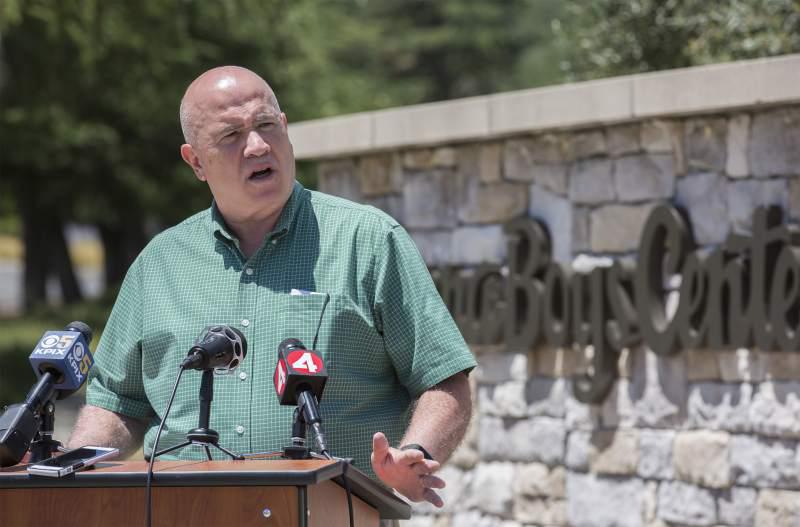|
Hanna Boys Center to hire private eye to seek out abuse victims
By Anne Ward Ernst
Tracking down almost 2,500 boys will be a daunting task, but officials at Hanna Boys Center want to locate any sex abuse survivors whose stories have not come out yet and make reparations. To accomplish this they will hire a private investigator to find them. “It’s a long overdue move,” said David Clohessy, an advocate of survivors of sexual abuse by priests. “Finally, Hanna Boys Center officials say they’ll seek out those who were molested at the facility. Santa Rosa Bishop Robert Vasa should do likewise, using church bulletins, pulpit announcements and parish websites.” Clohessy, a former director with Survivors Network of those Abused by Priests (SNAP), has appeared in a support role in Sonoma with two alleged sex abuse survivors who claim they were sexually molested by Father John Crews when Crews ran Hanna Boys Center between 1983 and 2013. Brian Farragher, Hanna’s current CEO, said they will be looking for students who were at Hanna between the years of 1983 and 2017. That period covers both the time when Crews was director of the center and, later, when another sexual predator, Kevin Thorpe, worked as a youth counselor and clinical director at Hanna. Thorpe was arrested in 2017 for sexual misconduct and was later sentenced to 21 years in prison for sexual abuse. Hanna and the Diocese of Santa Rosa recently agreed to a $6.8 million settlement with two brothers who were abused by Thorpe. The former students Hanna seeks will be asked if they were abused in any way, or if they know of anyone who was victimized. And, where appropriate, Farragher said they will be offered treatment, support and restitution. “We believe that it’s the only way forward for us,” Farragher said. Officials with Hanna, a residential treatment facility and school for at-risk boys since 1945, said they hope to have selected a vetted private investigator by October. A subcommittee of the board of trustees is selecting the private investigator, said Tom Coughlan, chief development officer. The first allegation against Crews came in 2013 when a Sebastapol-based widow claimed that her late husband told her Crews sexually abused him in the 1970s when Crews was serving at St. Sebastian’s Catholic Church in Sebastopol. Crews resigned from Hanna, denying the charges, but saying at the time that he was leaving because he didn’t want to cast a shadow over the center. Since then at least four men have also come forward with allegations of being molested by Crews while under his care. Crews is believed to live in South Carolina with, or near, his mother and is no longer a priest, but has not been defrocked. Clohessy, who himself was abused by a priest as a youth, said Hanna officials and Bishop Robert Vasa of the Diocese of Santa Rosa, which is affiliated with Hanna, need to do more outreach to alert the communities where Crews might be living so that he doesn’t have the opportunity to molest more boys. “So while helping to heal adults who were assaulted as kids is important, it’s even more important that Vasa and center director Brian Farragher focus first on warning police, prosecutors, parishioners and the public about known or suspected predators who were at Hanna,” Clohessy said. Engaging a private investigator is one element of a long-term strategic plan the Hanna officials say is a commitment to “healing past wounds, improving outcomes and expanding impact.” “The strategic plan articulates five goals that are critical to the success of Hanna,” Farragher said. “The first is to address and uncover any past incidents of sexual abuse, to make sure that any young person in our care who was hurt is heard, that appropriate actions are taken, and amends are made. This can never happen undetected again.” Other goals in the plan include a greater emphasis on research, knowledge and sharing of trauma-informed care (TIC); creating a more flexible structure – which the center has been undertaking through recent reorganizations; gaining recognition as a “national destination” and a leader on TIC; and being a “model” and “self-sustaining” organization that partners and collaborates with local and regional groups. “The strategic plan is 100 percent supported by the board,” said Tullus Miller, chair of the Hanna board. He said it wasn’t a “top down” decision and wasn’t brought out suddenly. Through focus groups, studies and expert evaluations, the board, Farragher and key staff worked together to develop the plan, Miller said. The plan and its subsequent reorganization this past spring unleashed a torrent of commotion among staff members, some of whom were long-time employees who lost their jobs in the restructuring. Farragher said the structure of the center was unsustainable and out of balance. In some cases, such as with the cottages where most of Hanna’s students live, the hierarchy of management was unclear and created confusion among staffers. That and other areas of the center needed to be realigned. In the process some departments, such as food service, were outsourced because it was more economical, he said. Farragher said some of the “upset” feelings over the changes made at Hanna were “a little contagious” and affected the students. He said he recognizes that he could have done a better job of communicating the direction to the staff. Some staff members conjectured that Farragher and the board intended to alter the make-up of the center and dissociate from the residential care model. Quite the opposite, Muller and Farragher said. “There is no intention of getting out of this business. This is our legacy,” Farragher said. “This is where we intend to stay, in terms of residential care. The shift we’re trying to make is building programs that are models, that cannot just impact 100 kids but that can impact beyond.” Contact: anne.ernst@sonomanews.com
|
.
Any original material on these pages is copyright © BishopAccountability.org 2004. Reproduce freely with attribution.
